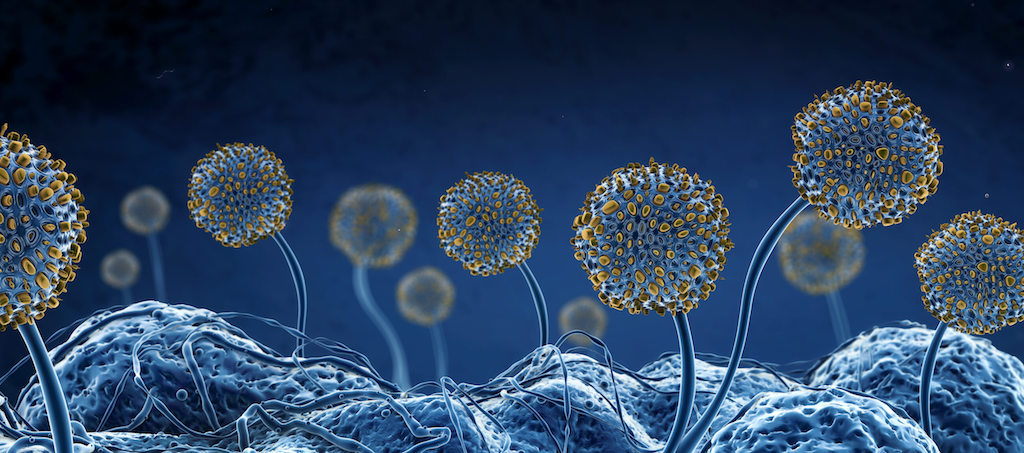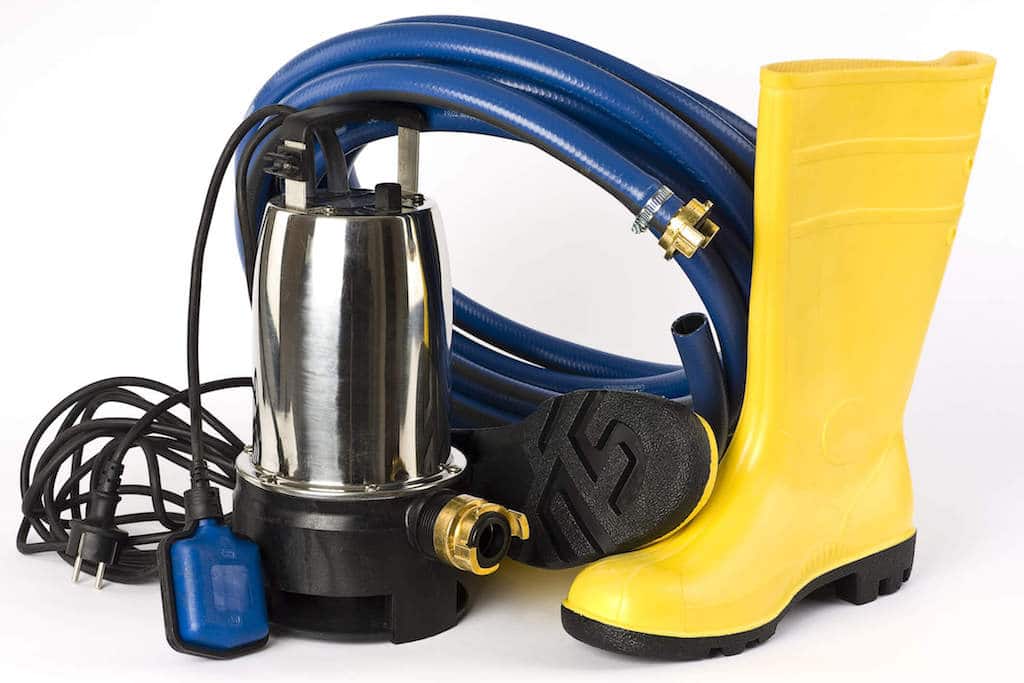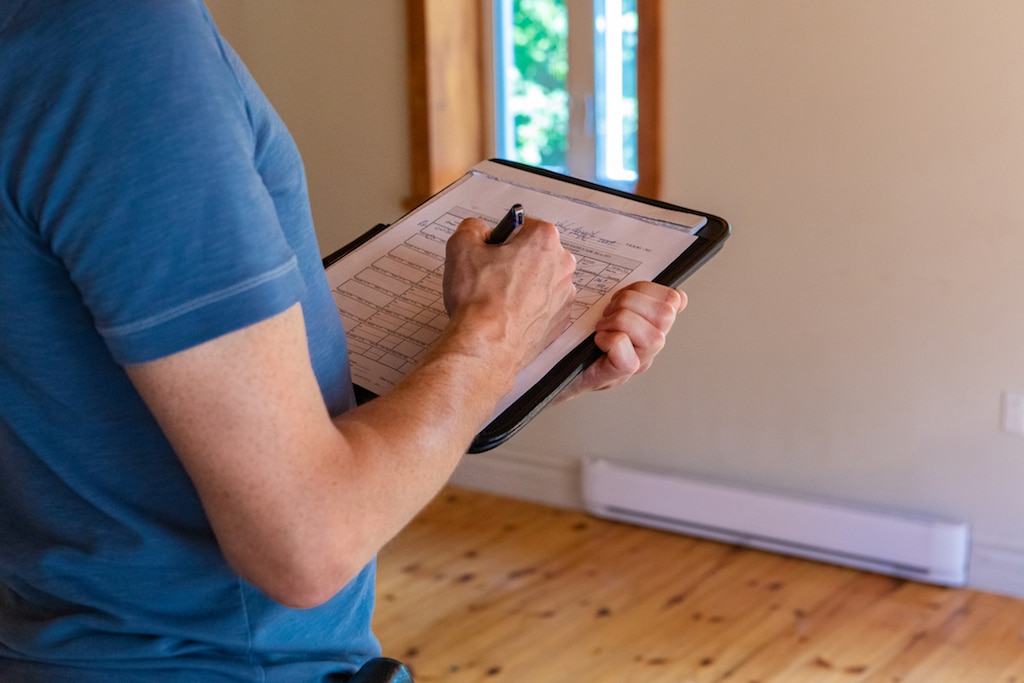No products in the cart.
Massive water events like hurricanes and floods are terrifying. Mammoth storms have the ability not only to take lives but also cause catastrophic damage along the way. The terrifying beauty of mother nature.
For homeowners, these tremendous water events can be even more frightening. While the safety of your family and yourself is the top priority, you also have to consider the impact all of that water can have on your home. When the storm blows out, what water disasters are left behind?
No matter how much preparation you put into prepping your house for these natural events, sometimes mother nature has other plans.

When that happens and a wet disaster is left behind, mold can take the opportunity to move into the home and begin to colonize. While many of us may begin the journey to fix a home with a phone call to the insurance company, there are steps you can take from the moment the storm passes that will help prevent mold growth as much as possible.
Keep in mind, mold only needs between 24-48 hours to grow. With mold spores anywhere and everywhere, a soaked home is a prime environment for them to settle into.
Taking preventative steps as soon as possible can help alleviate renovation costs, head off any mold exposure adverse health reactions, and give you peace of mind. And after such a traumatizing event, taking action where possible can go a long way towards healing.
HERE ARE SEVEN STEPS TO FOLLOW TO AVOID MOLD AFTER FLOODING:
1. LOOK FOR ANY AND ALL ELECTRICAL HAZARDS BEFORE ENTERING THE WATER.
You started out with safety as the main priority and you need to maintain that mindset while starting the trek back to normalacy. Do not enter a flooded area before making sure the electricity from the entire home is off. You probably turned off the electricity before the storm, but double-check carefully before entering standing water. The power should be turned off at the breaker and the power meter should be completely off. If the meter is still running, that means there’s an issue somewhere and you need to wait for a professional to assist.

2. USE A SUBMERSIBLE PUMP TO PUMP OUT THE BULK OF THE WATER FROM THE BASEMENT. MAKE SURE THE EXIT POINT FOR THE WATER IS BEING DIRECTED AWAY FROM THE HOUSE.
This is a multi-point process. First, snap a few pictures of the water damage for your insurance company before you begin to pump. Then take a look outside. If there’s standing water around your home, chances are that the water will come right back inside as your pumping. When the water recedes, you can start to remove that built-up water. Follow the directions of the specific pump you’re using but keep in mind to drop it at the deepest point of the flooded area and place the other end of the hose as close to a drainage system as possible (and far as far away from your home as possible). As soon as the water is gone, turn off the pump immediately.
3. USE A SHOP VACUUM DESIGNED FOR WET VACUUMING (BE SURE THERE ARE NO FILTERS INSTALLED WHEN USING YOUR SHOP VACUUM TO REMOVE WATER) AND REMOVE THE REMAINDER OF THE WATER.
A wet vacuuming system is uniquely built to suck up liquids, making it a great tool to finish collecting any standing water. Keep in mind to continually check the tank so that it doesn’t overfill and remove the filter before you begin vacuuming up the water. Remember, molds thrive in any level of moisture so make sure to run the vacuum over every square inch of space that got affected by the water damage. Continue taking pictures as you go as well for insurance purposes.
4. MOP UP AND DRY AS THOROUGHLY AS POSSIBLE.
Take out everything you can from the water-logged area and thoroughly mop the floors, walls, and any other affected surfaces. Use towels to pat dry the space as much as possible (microfiber is best) and wring them out in a bucket. Make sure to wash the towels using EPA-approved cleaning solutions immediately after finishing so mold doesn’t get the chance to grow on those either. Or just throw them out altogether.
5. INSTALL DEHUMIDIFIERS TO FURTHER DRY THE SPACE. HUMIDITY NEEDS TO DROP TO A STABLE LEVEL BELOW 50% TO PREVENT MOLD GROWTH.
Do not, I repeat do not, run a fan after water damage. This can cause mold spores to circulate in from outside the area and it will more than likely maintain the humidity or make it even more humid. Instead, install a dehumidifier to continue drying out the space. These machines will not only pull water molecules out of the air but also any remaining on the surfaces of the space. Keep in mind the recommended space of the dehumidifier when setting it up in the flooded area. If the space is larger than the recommended coverage area, you may need to buy a second or more powerful dehumidifier.
6. REMEMBER THAT MOLD CAN GROW IN AS QUICKLY AS 24-48 HOURS SO THE SPEED AT WHICH THIS IS DONE IS IMPORTANT.
These steps need to be followed with your safety in mind, but as quickly as possible. Flooded areas can become oases’ for mold to grow in. Once mold begins to colonize, it will begin releasing microscopic spores into the air that can easily start more colonies in other parts of a home. After massive flood events, that opens the door for a massive amount of potential mold presence in your home. Many of these species also have the ability to release microscopic toxins, called mycotoxins, into the air as well. That coupled with the abundance of potential mold spores can wreak havoc on the air quality in your home and spark a long list of adverse health reactions in you and your family. Taking steps to mitigate mold growth can help avert this problem.

7. PERFORM A MOLD INSPECTION BY A LICENSED MOLD ASSESSOR 72-96 HOURS AFTER TO ENSURE THAT THE SPACE HAS DRIED PROPERLY AND NO MOLD IS ACTIVELY GROWING.
Mold growth happens quickly. Bringing in a mold inspector can give you an accurate picture of the indoor air quality of your home after water damage. These events have the ability to bring in a host of bacteria, molds, and toxins that can all cause serious illnesses. After experiencing a water disaster, that’s the last thing you want to deal with. Make sure to choose a health inspector with your continued health in mind. Their inspection should span a few hours, thoroughly check every space in the house, and use a variety of measuring techniques to assess the area.
Data you should expect to see included are:
- Types of molds present
- Quantities of each mold
- Potential spore presence in the HVAC system
- Presence of mycotoxins (a harmful toxin produced by molds)
- Presence of bacteria
RECOVERY
The road to healing after a massive water event can be daunting. Throughout the process, continue to remind yourself that homes can be fixed and belongings can be replaced. The safety of you and your family is what’s most important- both from the water event and from the indoor air quality that follows.
Please do not hesitate to contact us with any questions or concerns you may have- you are not alone. We’re here to help in any way we can to alleviate as much of the hardship and stress as we can.
Still Have Questions?
A member of our team is here to help! Click on “Get Started ➤” below to book a consultation with a member of the HOMECLEANSE team. We have a few quick questions that will help us put together a roadmap to solve or prevent all of your mold problems.
Two minutes of your time could lead to better health for you and your family.
Licensed in Nationwide. We will come to you.
CMRS Certified, Certified Microbial Remediation Supervisor, Certified Member of IAQA, IICRC, ACAC, & A+ Rating BBB
